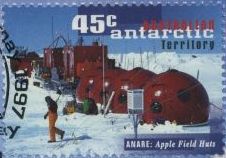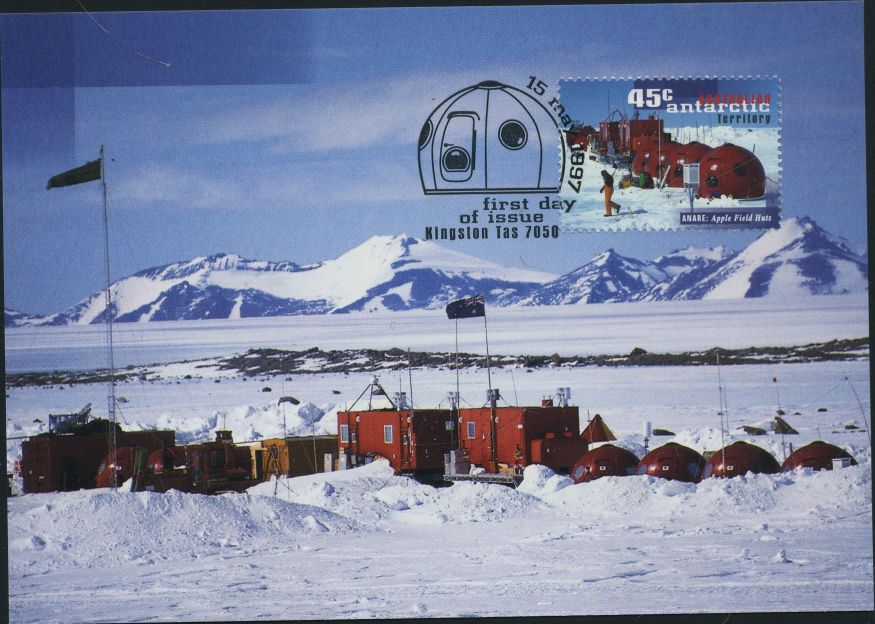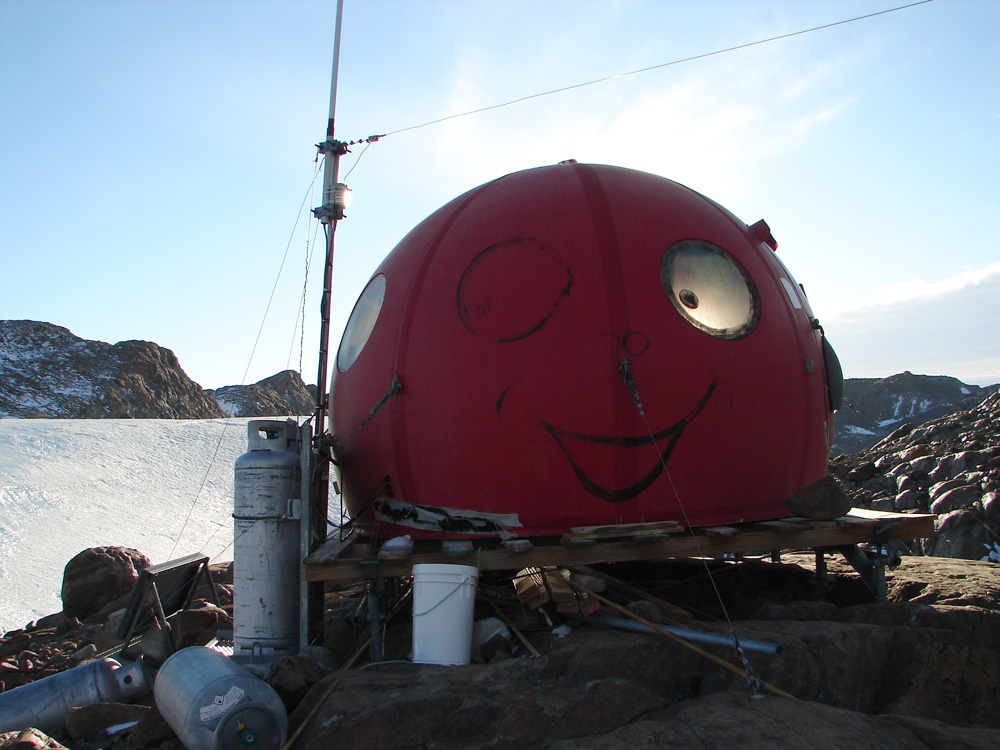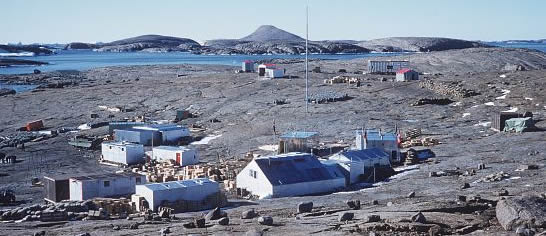Bureau blows hot and cold over Antarctica warm-up as Bureau of Metereology backs down from a claim that temperatures at Australia's three bases in Antarctica have been warming over the past three decades

© unknown
With weather stations like the ones below, it might be a bit hard to separate the real temperature signal of Antarctica from your local UHI. I wonder how much more cooling would be evident in the data had the weather stations been placed away from the "living pods"?
This picture on a postage stamp from Australia, celebrating the Australian Antarctic Territory in 1997, may help settle the issue. Note the Stevenson Screen near the "living pod" on the right.
Here is the larger photo of the first day of issue card, the Stevenson Screen is also just visible above the snowbank in the lower right. Rather close to human habitation I'd say. Looks like its in the middle of a small AHI (Antarctic Heat Island).

© unknown
They have propane heat, apparently:

© unknown
Here is what Australia's Mawson Station looked like circa 1956-1957:

© unknown
And here is what Mawson station looks like today, as of Feb09. It appears they dumped the "living pods". Maybe a little "urban growth" going on there?

© unknown
Here's another picture of a Stevenson Screen close to a building in Antarctica, from the British Antarctic Survey:

© Pete BucktroutLocation: Fossil Bluff, Alexander Island
Season: 1994/1995
A senior bureau climatologist had accused
The Weekend Australian of manufacturing a report that temperatures were cooling in East Antarctica, where Australia's Mawson, Davis and Casey bases are located.
The trend of temperatures and ice conditions in Antarctica is central to the debate on global warming because substantial melting of the Antarctic ice cap, which contains 90 per cent of the world's ice, would be required for sea levels to rise.
While calvings from ice shelves in parts of West Antarctica have generated headlines, evidence has emerged that temperatures are cooling in the east of the continent, which is four times the size of West Antarctica.
Contrary to widespread public perceptions, the area of sea ice around the continent is expanding.
The Weekend Australian reported last month a claim by Bureau of Meteorology senior climatologist Andrew Watkins that monitoring at Australia's Antarctic bases since the 1950s indicated temperatures were rising. A study was then published by the British Antarctic Survey that concluded the ozone hole was responsible for the cooling and expansion of sea ice around much of the continent.
The head of the study project, John Turner, said at the time that the section of Antarctica that included the Australian bases was among the areas that had cooled.
Dr Watkins said
The Weekend Australian had misrepresented the results of the BAS study, which made no findings about temperatures at Australian bases.
When it was pointed out to Dr Watkins that Professor Turner had been quoted directly, Dr Watkins said his bureau, and not the BAS, was the agency collecting temperature data.
"You kept going until you got the answer you wanted," Dr Watkins said.
"You were told explicitly that the data collected by the Bureau of Metereology at the Australian bases shows a warming for maximum temperatures at all bases, and minimum temperatures at all but Mawson."
However, Professor Turner told
The Weekend Australian the data showed a cooling of the East Antarctica coast associated with the onset of the ozone layer from 1980 onwards. Professor Turner said the monthly mean temperatures for Casey station from 1980 to 2005 showed a cooling of 0.45C per decade. In autumn, the temperature trend has been a cooling of 0.93C per decade.
"These fairly small temperature trends seem to be consistent to me with the small increase in sea ice extent off the coast," he said.
Dr Watkins did not dispute the figures referred to by Professor Turner.
Referring to the bureau's data collection since the 1950s, Dr Watkins said Professor Turner's figures were "only half of the full data set".
However, Dr Watkins admitted that analysis of the data might show "an ozone-induced cooling trend in the latter half of the record" - a reference to the past three decades.
Dr Watkins declined to release the temperature data to
The Weekend Australian. He said it had still to be fully analysed by the bureau.
Nationals Senate leader Barnaby Joyce said he hoped all government agencies would co-operate in helping to inform the global warming debate.
"These agencies need to be able to dispense the facts without fear or bias," he said.
Reader Comments
to our Newsletter